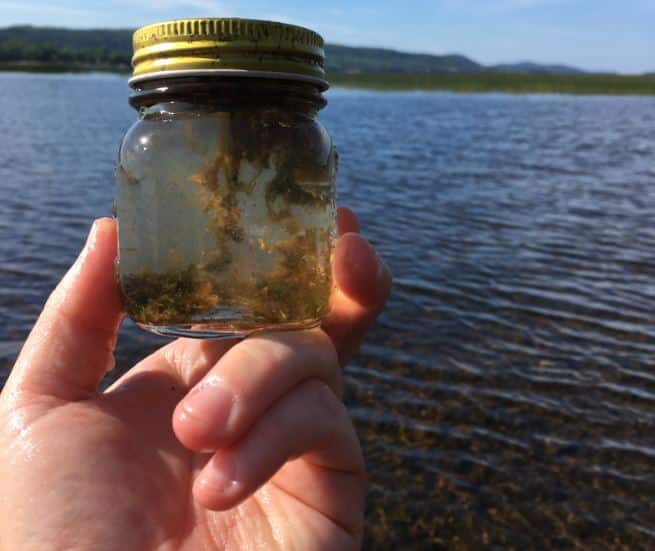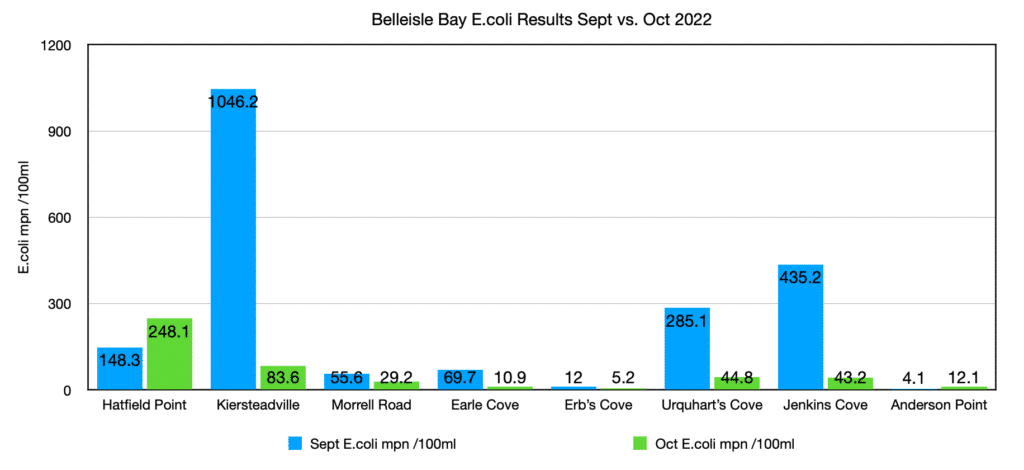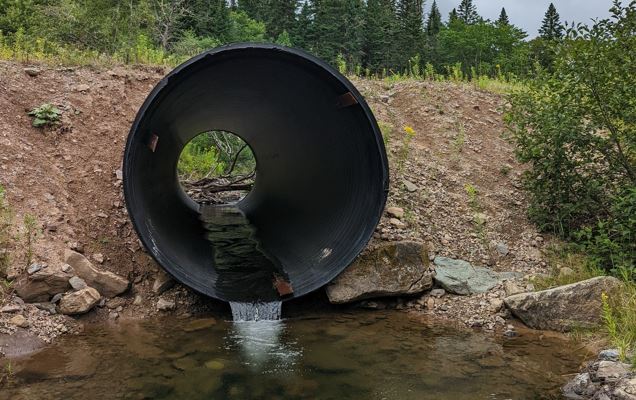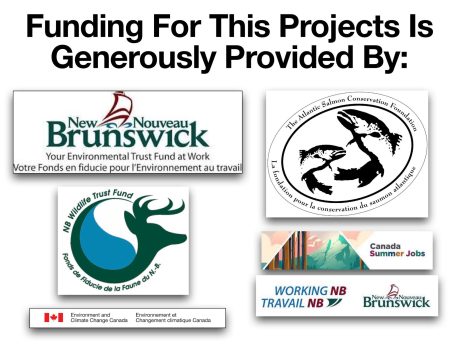Your cart is currently empty!
Month: December 2022

Cyanobacteria Results for 2022
E.Coli Results for Oct 2022
 Water quality monitoring results for E.coli amounts from our October 2022 sampling are in. I am please to report that the results show a distinct decline in E.coli amounts for most of the sites tested. Results determined an average of 59.6 E.coli/100ml this is a significant decrease from September (257 E.coli/100ml) but still well above August (0.7 E.coli/100ml).The highest amount was at Hatfield Point Wharf (248.1 E.coli/100ml) this site has continued to see an increase in E.coli amounts and exceeds the Health Canada acceptable guidelines for the use of recreational surface water, and we advise residents’ to stay out of the water in this area. Anderson Point also saw an increase in E.coli amounts to 12.4 E.coli/100ml in October from 4.1 E.coli/100ml in September.
Water quality monitoring results for E.coli amounts from our October 2022 sampling are in. I am please to report that the results show a distinct decline in E.coli amounts for most of the sites tested. Results determined an average of 59.6 E.coli/100ml this is a significant decrease from September (257 E.coli/100ml) but still well above August (0.7 E.coli/100ml).The highest amount was at Hatfield Point Wharf (248.1 E.coli/100ml) this site has continued to see an increase in E.coli amounts and exceeds the Health Canada acceptable guidelines for the use of recreational surface water, and we advise residents’ to stay out of the water in this area. Anderson Point also saw an increase in E.coli amounts to 12.4 E.coli/100ml in October from 4.1 E.coli/100ml in September.
Above Chart Compares September to October 2022
Although, the rest of the sites still had elevated amounts from what we normally expect they have significantly declined from the extremely high amounts seen in September.The elevated levels we continue to observe in October are likely the result of the significant rainfall and warm autumn temperatures we’ve seen this autumn.These results continue to demonstrate the importance of maintaining well-vegetated stream banks and shorelines, the importance of having well-maintained and modern septic systems, and the affects of surface runoff on water quality. We will continue to monitor E.coli amounts in the Bay through to the end of November due to the elevated amounts.For more information contact us at: belleislewatershed@gmail.com
Fish Passage Assessment
Fish Passage Assessment 2022
Fish require passage between and within watercourses to complete necessary stages of their life cycle including spawning, finding food and shelter. Additionally, fish assist with recycling nutrients in watercourses and help maintain healthy aquatic ecosystems. By assessing road-watercourse crossings, the Belleisle Watershed Coalition helped to identify barriers that block the natural movement of fish and degrade healthy aquatic ecosystems.Over the course of the past summer, our hard working field staff assessed a total of 46 watercourse crossings within the upper Belleisle watershed. Results are now in and it was surprising to learn that only 10 of the 46 structures (21.74%) assessed were found to be completely passable by fish. Of the remaining 36 structures, 20 structures (43.48%) require remediation of a full barrier and 16 (34.78%) require remediation of a partial barrier. This means 250 kilometres (km) of stream habitat have a barrier to the free movement of fish. This is equivalent to putting 36 roadblocks on the highway between St. Andrews and Moncton! Yikes! Looks like we have our work cut out for us and will be working hard through the winter to start planning barrier remediation next year, stay tuned to learn more about this fascinating project.This project was made possible thanks to the generous support from the Atlantic Salmon Conservation Foundation, the New Brunswick Environmental Trust Fund, the New Brunswick Wildlife Trust Fund, the New Brunswick Student Employment Experience Development and the Government of Canada’s Canada Summer Jobs program and Environment Canada’s Science Horizons Program.
